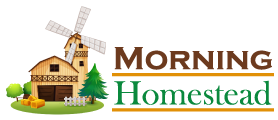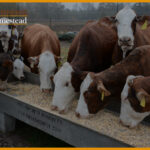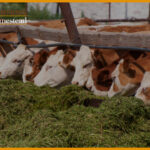Last Updated on June 8, 2023 by Georgie Smith
If you have ever found yourself frustrated because you have cattle running loose, you understand how important good fencing can be. Building a fence from the best fence material for cows is easier than you may think.
Whether you own one cow or a large herd, a good fence is vital. There are three types of fencing; these are woven wire, barbed wire, and high tensile smooth wire. An excellent fence for your cattle will have two distinct characteristics, a visual barrier, and a physical barrier.
Basic Comparison:
SSL
Storage
Domains
Sub-domains
FARM GARD CL3
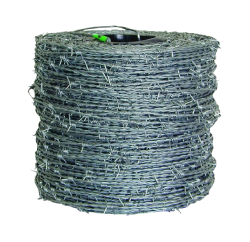
Gauge - 4.0
Coil
Farm Gard
Polished
Cherry-Pic
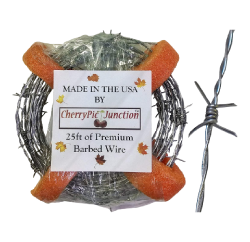
Galvanized Steel
Gauge - 18.0
CherryPic Junction
Polished
Razor Wire

Galvinized Steel
Yeegfeyuu
Polished
18 x 4 x 18 inches
The purpose of this article is to enlighten the reader about the best livestock fencing ideas for all scenarios. Also in this article, you will get an unbiased opinion with facts in a review of the five best-selling fence products on the market.
The Right Fencing is Necessary for Keeping Cattle
Barbed Wire:
The most commonly used material for erecting a fence for cattle is the barbed wire. This type has an automatic built-in physical barrier. The number of strands of barbed wire is five, but, some farmers add a few more.
A cattle farmer in one state may be okay with running three strands while one in Florida may need five strands. It really depends on the acreage and the number of cattle. Woven wire provides an excellent physical and visual barrier due to the total wire per each foot.
However, cows are famous for destroying the fenceline that keeps them in unless there is a deterrent. Placing one strand of electric or barbed wire to the top of a woven fence stops the cows from leaning over the fence row, damaging the area.
However, if the cow has an itch, it is going to go to the closet area to relive itself, which is often the fence. Cattle often does a stomach rub down the fence row which can cause the woven wire to give and bow out.
You can easily prevent that with installing one strand of barbed wire around two feet down from the top of the fence-row.
High Tensile Cattle Fence Wiring:
Erecting an electric fence is one economic strategy of installing fencing. The cost of such would be 25 to 75 percent less per running foot than woven or barbed wire. When installed correctly, it is the most durable method that adds twenty to thirty years while needing little maintenance.
High Tensile Wiring can withstand over 1,000 pounds of pressure from livestock and low-temperature narrowing before the elasticity is damaged. It also requires less erecting time with fewer repairs as well as fewer posts.
Other Features to Consider:
After you have made your choice on the type of cattle fence design is right for you, there are other livestock fencing ideas that you should consider.
- Install a Gate
If you are trying to get one of your cattle back in, the odds are that it will not go back in the way it came out. It makes better sense to install a gate to have for this reason. Why risk having a perfectly good fence torn up to get cattle back in where they belong?
- Proper Bracing is Vital
No matter what style you choose, bracing is one of the most important details to consider. Whatever you use, the brace you decide to run across needs to be twice in length of your fencing height.
- Do Not Cut Corners
This part may sound complicated. However, it works. If you have a cross fence that joins a perimeter fence or just a corner of your property with angles less than 90 degrees, your cattle are unsafe.
What that does is creates an area for the cattle to get pinned in and cause them to hurt themselves or other livestock. Make the area at least 90 degrees so the cows can walk the fence without getting cornered in.
- Plan Properly
Planning is never a bad thing. Even with fencing, proper planning needs to take place before you buy the materials you want to use. Research and planning for a long-term investment may save you money in the long run.
The followings are the five Best-Selling Items to keep your cattle in and predators out:
Razor Wire Razor Ribbon Barbed Wire 18″
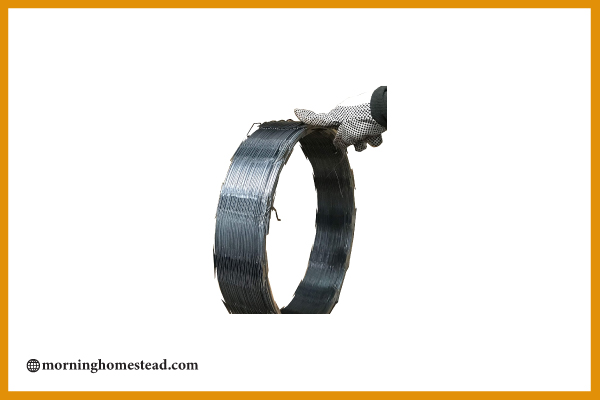
Razor barbed wire provides the ultimate high perimeter security for outdoor and indoor protection of property. In this case, the livestock is the property. Razor barbed wire has a few aliases which are Helical, Security barbed wire, Razor Ribbon, and Concertina Wire.
Whatever name you use, you still have the same protection. This package is 18-inch wire coils that are stainless steel and razor sharp. With this particular option, you can cover up to fifty linear feet. Just because the coils can reach that length does not mean you should. If you expand it beyond thirty-three feet, the effectiveness will reduce.
To accomplish long-lasting, reliable solutions, cattle farmers prefer stainless steel. Be sure to read more about this product here before you make your choice.
Cherry-Pic Junction 25 Feet Real Barbed Wire – Light Duty 18-gauge 4 pt.
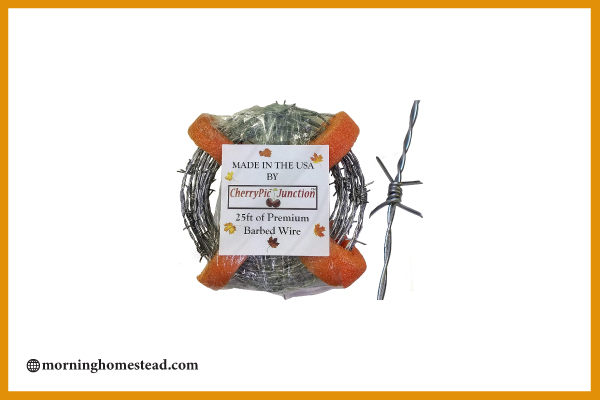
Next is this barbed wire that is a high-quality, high-tensile barbed wire ideal for many uses. Just because the price is low does not mean it is a “lesser quality” than others on this list. Actually, this item is a front-runner just as durable as other more expensive brands. It is metal and super sharp. For safety purposes, wear gloves before handling.
The wire is a high tensile, light duty, 18-gauge that makes keeping your cattle in and predators out simple. Due to its design, it is easy to bend and manage various shapes. This particular package is twenty-five feet long, and you can add it to your list here.
FARM GARD CL3 High Tensile Barbed Wire, 4 Points

If you have concerns about your cattle getting beyond your fence, this is the product for you. Being able to rustle the herd, guide them beyond the fence row and safely keep them is just one reason this product is a top seller.
The construction of the steel wire has a high tensile finish and is perfect for exclusion and cattle applications. Features that make this item a leading, best-selling product is as follows:
- Its Four-Point Style
- 5 Gauge Thickness
- Five-Inch Spacing Between Barbs
- High-Tensile Class three
If those perks were not enough this fencing has the unique feature of the reverse twist design that works with keeping your livestock in safe and sound. The reason that this is a game-changer is that you never need to worry about the wire sagging in areas or pre-stretching.
One added perk is the wire is smaller in diameter which proves that it is as strong as the standard barbed wire. You also have more posting space by using this fencing by Bekaert. The roll measures 1,320 feet with an effective 950 pounds breaking load.
You can order this wire to protect your cattle and other livestock here. The link directs you to more information as well as fast, easy, and safe purchasing and delivery right to your front door.
Anself BTO-22 Concertina NATO Razor Wire Galvanized Steel 492′
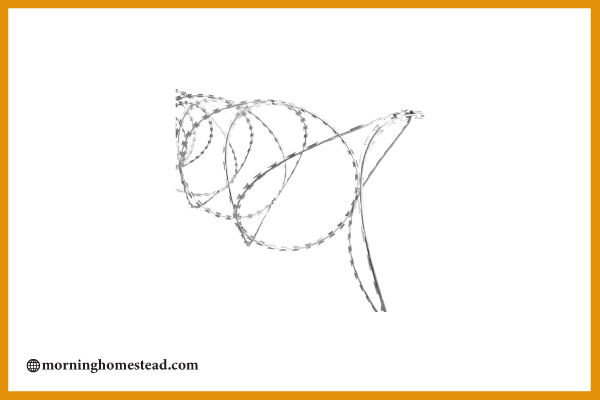
By now you can see that erecting a fence using barbed wire is the way to go. The reason for this is that it works at keeping your cattle inside instead of roaming through the neighborhood. This barbed wire by Anself is a leader for more than just its price tag, it is durable and razor-sharp.
When stretched, the galvanized steel barbed wire expands to 492 feet, when coiled it will reach between 43 and 85 feet. With a coil diameter of 28 inches and razor sizes of 0.87 inches x 0.59 inches, you get plenty of protection.
You can erect a perimeter around your residential area as well as the area you plan to keep your cattle. You can order this five-star wiring here and get started with keeping your cattle in safe and sound.
YARDGARD 36 inches 50 foot 16 Gauge Welded Wire Economy Fence
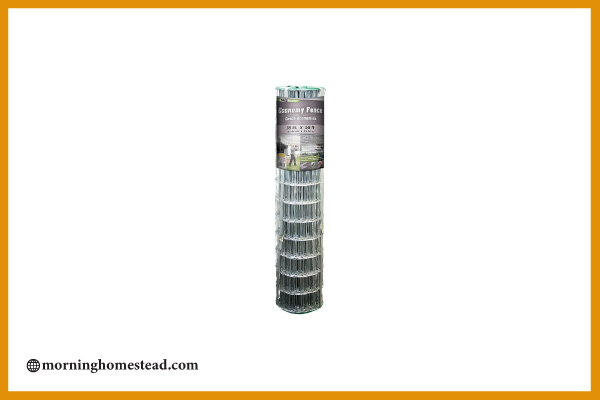
While it is workable to erect a fence for your cattle completely from barbed wire, financially may not be doable for everyone. Using 16-gauge welded wire for the main section and adding a row or two of barbed wire will easily keep your cattle where they belong.
This YardGard 36-inch 50-foot 16 Gauge Wire fencing is the perfect option for this scenario. The economy fence is ideal for multiple purposes, including keeping livestock where it belongs. It is also perfect for protecting your garden from deer.
This economy fencing along with barbed wire makes the perfect rail fencing. You can order 25, 50, and 100 feet rolls that are available in 12.5, 14, and 16 gauges. The available heights are 2, 3, 4, 5, and 6 feet. Ordering this class one galvanized zinc-coated rust-resistant wiring is simple. You can go here to read more information as well as place your order.
Choosing the Best Fence for Cows and Other Livestock
Choosing the best fence for your cattle and other livestock is as vital as the feed you provide. So, what type of fencing will be the best for your livestock? The correct answer is there is no perfect fencing because it is not a “one size fits all.”
If you have plans to move your cattle around, the best choice for you is portable fencing. Permanent fencing would be the most proper for stationary housing. The following information is to guide you in choosing the best fencing for your livestock.
Fencing for Horses:
The most crucial detail when you have horses that you need to keep enclosed is visibility. Horses need to see the fencing to prevent them from running into it and becoming entangled. The board fence and wood post are perfect for sight lines. However, that option is labor-intensive and expensive to erect.
Electrified poly tape fencing which is wide-strand is easier to install and lighter in weight and is equally effective. In the long run, this fence type is more portable as well.
Fencing for Cattle:
Fencing for cattle needs to be at least 54 inches in height to contain cattle properly. While woven wire and barbed wire are the most common option, high-tensile wire fencing with treated wood is becoming a popular system.
If you need to keep bulls from cows, you will need a stronger unit with larger gauge wire and thick posts. Also, electrifying the fence is a great avenue to keep your cattle confined. Cattle fence panels are often a solution to young ranchers just starting out with only a few heads.
Hog Fencing:
Panel fencing for feedlots is an excellent choice for pigs. The heavy-gauge wire panels will not collapse if the animals run into the panels. You have the freedom to configure your pasture or feedlot in any way you wish. You can add a gate and will be ready to roll. Many farmers are turning to electrified wiring as well.
Goat Fencing:
Goats are sneaky animals that can work their way through almost any type of fencing. The best choice to keep your goats in instead of chasing them around the neighborhood or untangling them is panels. The necessary trick is to space them close together.
Panels that are durable and steady are the best option if you want happy and healthy goats that are well-contained versus chasing them all over. To step it up a notch, add electric fencing to the interior area of the fence.
FAQs:
Q: Does having an electric fence cost more to build versus barbed wire?
A: No-the materials and labor that it takes to build a sturdy and durable fence will be significantly less than barbed wire.
Q: Is it true that an electric fence is more for temporary fencing rather than barbed wire?
A: Absolutely not! Both are permanent and will require much labor to remove.
Conclusion
Erecting one of the best and most durable fences to keep your herd of cattle safe is vital to its health and safety. The last thing you want as a cattle rancher is to have your herd escape via the fencing due to poor quality.
Barbed wire is still the most successful system for cattle farmers. Whether you build a fence with just barbed wire or with a couple of strands of barbed wire added, you need to do much planning to get it right. You want to keep your cattle in, but you also want to ensure their safety as well.
How about you, do you already have cattle and fencing that you can add information to this article? If you do, please leave it in our comment section below. We love hearing from our readers. While you are here, would you please “like and share” our work to help us grow and help others?
